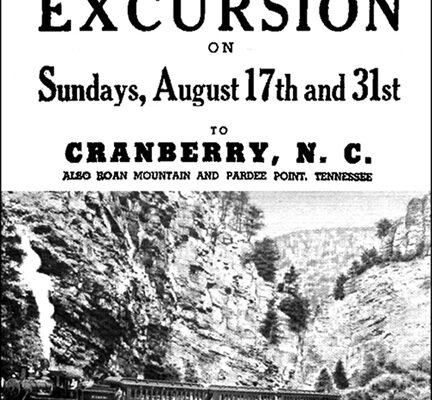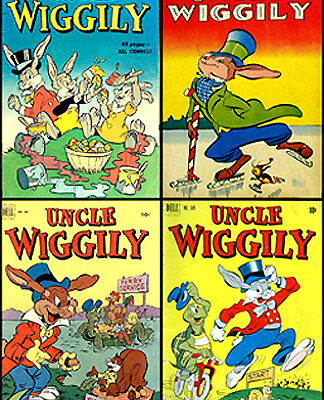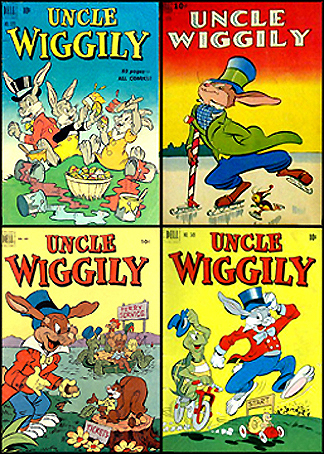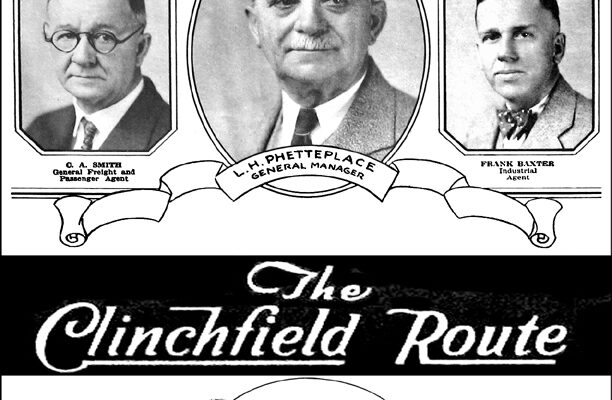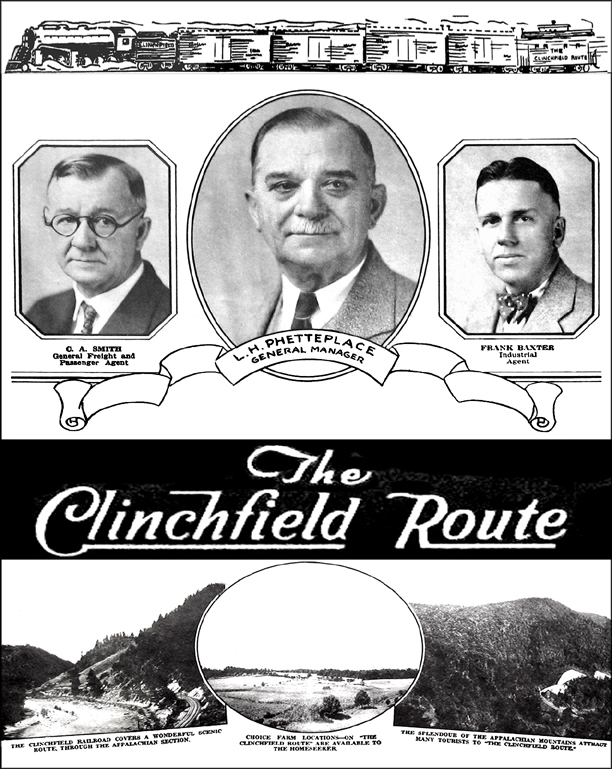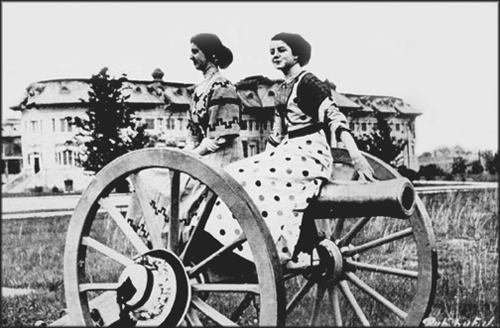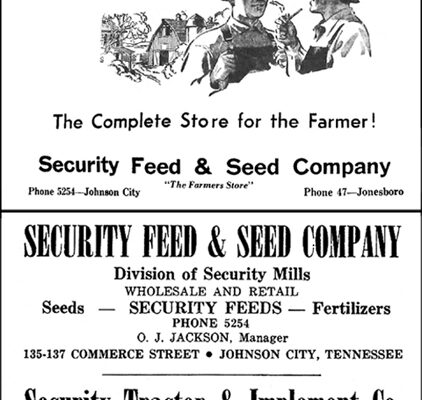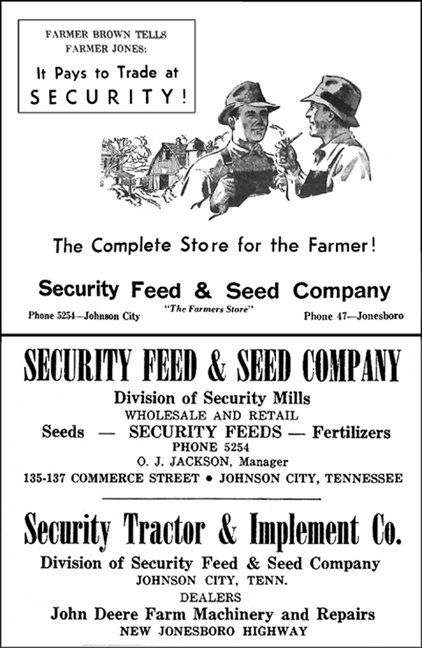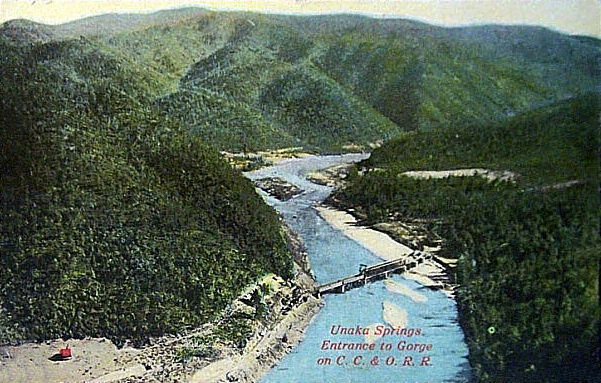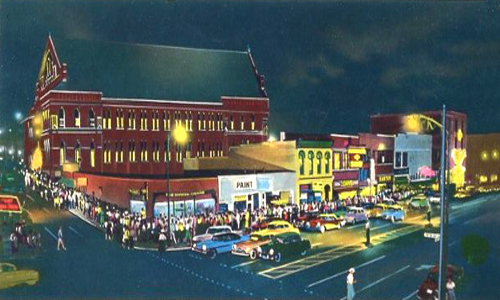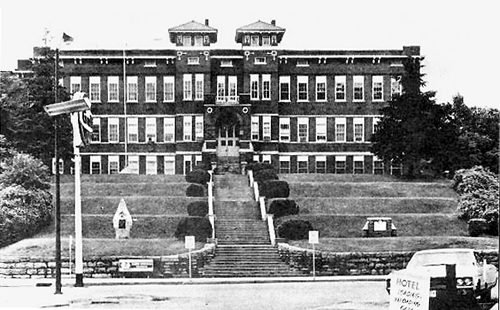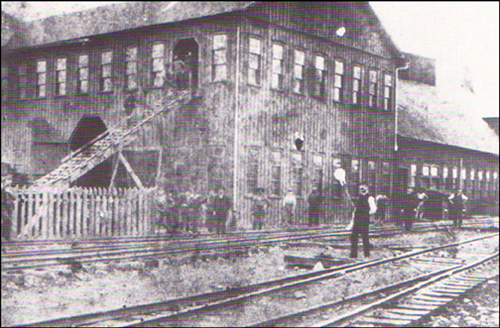The East Tennessee and Western North Carolina’s (ET&WNC) narrow gauge railroad, affectionately known as Tweetsie, can be traced to 1881 when it began trekking between Johnson City and Hampton and a year later to Boone.
The roughly 54-mile journey required four hours under ideal circumstances to negotiate the harsh prodigious grades and winding curves. Tweetsie was not your typical train. Its sweet and mellow steam whistle served more as a greeting than a warning. The one exception was when it became necessary to frighten away an animal that unwisely ambled onto the track, posing danger to passengers and critter.
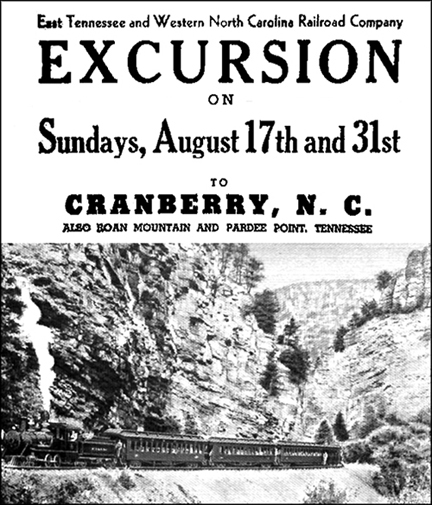
In addition to normal rail service, the amenities provided by the train were endless. Tweetsie soon became known as the “Railway with a Heart.” Cy Crumley, the train’s well-known conductor since 1906, frequently leaned out the window to grab a handful of mail to take to its destination or relay a verbal message to someone along the line. The train might stop in front of a farmhouse to deliver a spool of thread or a length of wire.
Special interest groups, such as a camera club, regularly chartered the railroad for a photographic outing along the stunning mountainous country over which the little train traversed. Crumley altered his characteristic call, “All aboard” to something with a more subdued personal tone – “Well folks, I reckon we might as well mosey along.” S.F. Pippin, engineer since 1903, followed suit by uttering to the passengers, “If you see something pretty while we are rolling along, just holler and I'll stop the train.”
Tweetsie stopped at small log cabin villages to deliver or pick up mail and medicine, let a doctor on or off on the way to deliver a baby, or allow a patient to return home after being discharged from a hospital. An enterprising post office employee once determined that it would be cheaper for trucks to haul mail. Tweetsie’s friends, fearing the worst, came to the defense of their little narrow gauge guest with a battle cry, “Abandon Tweetsie? You might as well dig up Grandfather Mountain.” The creative postal clerk’s voice of reasoning soon evaporated.
In August 1941, the now financially struggling railroad experienced a dilemma that almost prompted it to suspend operations. A storm produced floodwaters that caused an estimated $50,000 damage to portions of the track. Officials were left scratching their heads about what action to take. Finally, management made the painful decision to notify the Interstate Commerce Commission and request authorization to abandon the line. Tweetsie’s future looked grim.
However, four months later the circumstances would change significantly. Just when it appeared that the much-beloved little railroad would depart the business world, the December 7, 1941 attack on Pearl Harbor thrust the country into the conflict and issued new marching orders for the adored Tweetsie. A war that seemed to be 3,000 miles away suddenly came knocking on America’s door that fateful Sunday morning.
The government’s need for raw materials became a critical issue, thrusting the little train back into the global spotlight. Tweetsie’s floundering role was saved almost overnight as new life was breathed into the entire railroad industry. Once again, tourists were able to hear Engineer Pippin's farewell words that he uttered after each trip: “You all come back and ride with us again.” Indeed they did, at least for nine more years, until October 16, 1950 when Tweetsie made its last official roundtrip run.
